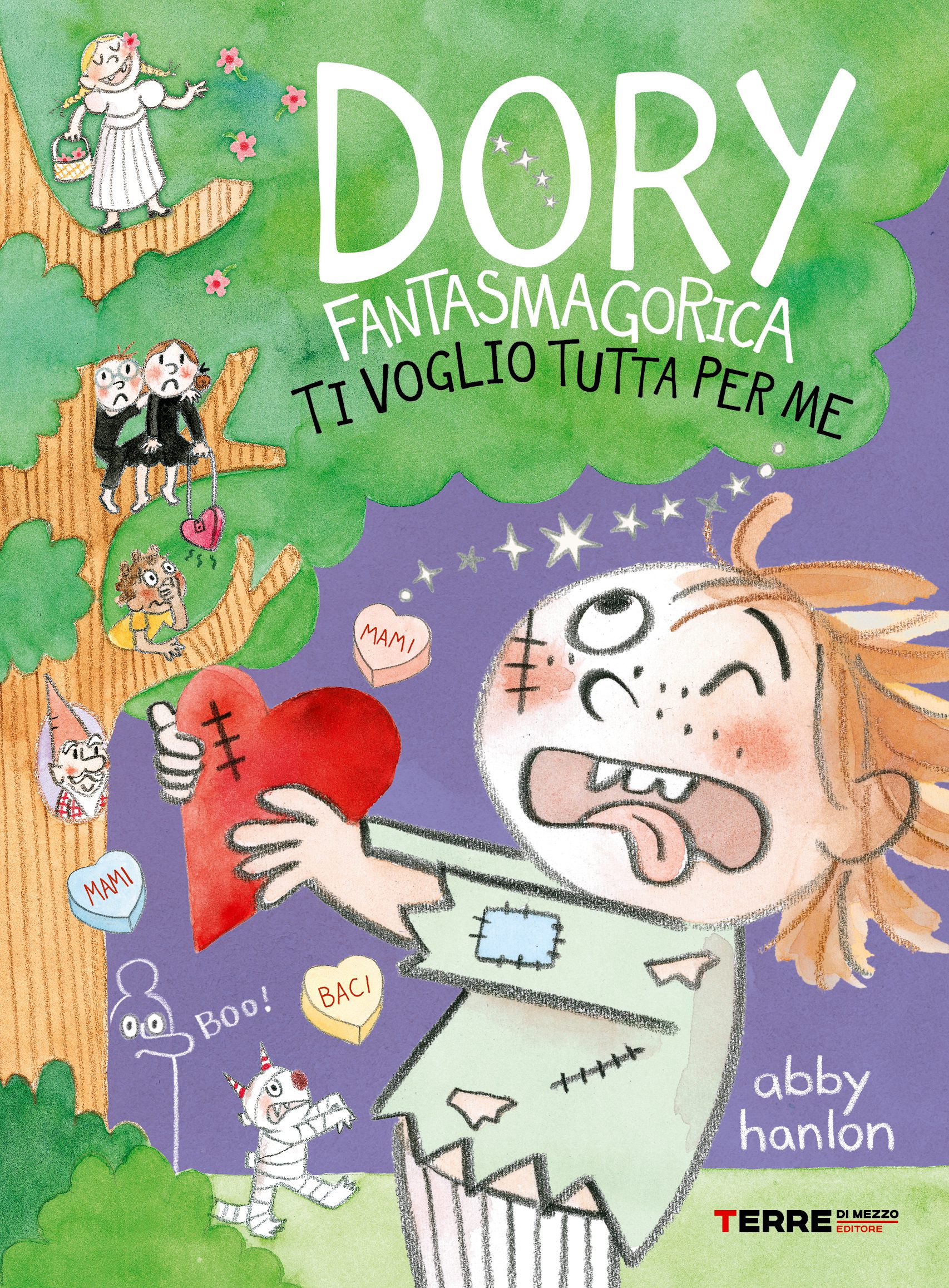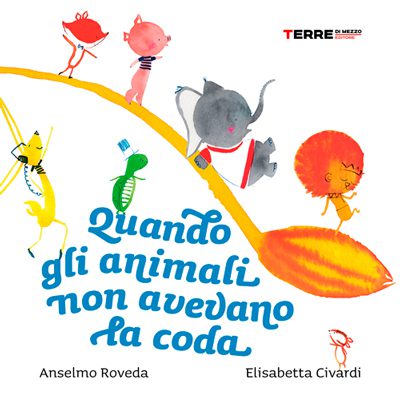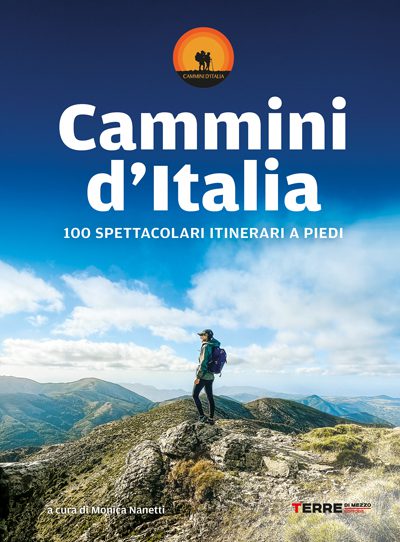Lots of curls and a real passion for drawing! From her beloved city, Genoa, Elisabetta Civardi, illustrator and educator, tells us how the book Quando gli animali non avevano la coda was born, written by Anselmo Roveda, coming out these days. Enjoy the reading.
Elisabetta, tell us about yourself
As I often tell children, what defines me best is my curly hair. Very curly. You identify me even from a distance! This hairstyle created a lot of problems for me when I was little, and perhaps for this reason I took refuge in the world of drawing and stories, which instead made me feel at ease, and I forgot for a while that I deserved the nickname of Pierina Porcospina.
So, because of the “anarchist Commune on my head”, as I define it, I find myself having a shy but equally exuberant disposition. I am a loner who loves being around people: I have always taken the initiative in proposing games to friends of the same age, and I found myself telling stories, and over time this has become my job as an educator.
I live in Genoa, in a former convent. I share the house with a musician, a puppeteer, a toy maker, a writer and others. There are also two children. It is difficult to find some solitude, but on the other hand we went through a very special quarantine.
I love Genoa, which is still the city of Emanuele Luzzati’s collages: lacy surfaces and surfaces that overlap vertically with the contemporary presence of bridges and overpasses.
I love cities of art and therefore Italy in general but, when I can, I take refuge alone on a wild rock overlooking the sea.
How and when did you approach illustration?
I’ve always drawn, and I’ve always loved colors. My mother says that one day, when I was three years old, she found me very concentrated and silent, then she asked me what I was thinking and I replied: “GREEN PEA”.
In first grade I started making little books for my classmates, they were called “Little Ghosts”, with ghosts it was easy to reproduce the characters that are always the same. Only in the last years of art school I realized I was interested in picture books, but the road was very long before I knew it was what I really wanted to do in life.
Tell us about your book Quando gli animali non avevano la coda, written by Anselmo Roveda
Quando gli animali non avevano la coda – or the “book of tails” as I have called it for a long time – it was born as a thesis project of the Ars in Fabula Master in Macerata. Thanks to Mauro Evangelista, I understood metaphorically which was my way as an illustrator; I slowly found the synthesis and the language I wanted to create for the ten animals that tell this legend of African origin.
I didn’t know it was an African tale, but its freshness and simplicity struck me immediately. So to accentuate its irony, I didn’t want to place it in a mythological place or time but in today: it makes you laugh to think of the horse sitting at the bar trying to read the newspaper annoyed by flies. I also wanted to pay homage to my city, so the backgrounds come from street drawings, which I then mixed with photos of French cities that I love.
For a year I worked on Quando gli animali non avevano la coda without knowing the name of who would take care of the written part. Then, by chance, I found out about Anselmo, a Genoese like me and whom I have known since before I took drawing seriously.
I think the dialogue with him was more or less this:
“What do you do with the drawing?”
“I work on an animal story, talk about why animals have tails.”
A discussion on the story followed, so I emailed my work to Anselmo. I think he liked it right away.
Tell us about your work as a workshop curator and the relationship with illustration
For more than fifteen years I have been conducting artistic workshops for children but also for adults and occasionally I hold training sessions for teachers on the method I have refined.
I have an apparently very free approach: to leave children (and people in general) free to expose themselves and open up without judgment, I create a well-finished setting, with precise times and materials; I set boundaries within which children can do what they want, so I reassure and contain without the experience being limiting.
In this process, the illustrated book is very important, I always use it as a content transmitter and a starting point for technique. The stories become the trigger for the self-narration of the participants, both in images and through words or the body.
I have worked in many contexts, but in my heart I will always carry the children of the service center of the Municipality of Genoa and the fathers I met on a path of parenthood in the prisons of my city.
My experience was fundamental for the research of the style of my illustrations: I had to look for a free and emotional language, but in the same way accurate and rich in details. I tried to mix what I see children observe: gentle shapes, captivating colors and a wealth of small details. I hope I have succeeded.
What are the artistic techniques you prefer?
For years I have tried everything, I love the brush when it leaves the first marks on the sheet, be they dirty or crisp and clean.
I like both pictorial and graphic techniques, but above all collage helps me to find shapes and think about composition.
Working with china and ecoline for When animals had no tails was a bit of a gamble; now I really love working with water, stain and, only later, I add small graphic signs for details.
Tell us about your studio and the place where you usually work.
Since January I have been sharing the space of Agrumi Studio with Letizia Iannaccone; when she asked me to join her I think I accepted for the sobriety but at the same time the care for the different details: very white rooms full of yellow and orange details.
As a disordered and dispersive person, I look for places that reconcile and help concentration. However, Quando gli animali non avevano la coda was born on the occasion of two different trips in the Prepranda wood, above Savona. Here is a retreat house for dancers and karatecans where I find hospitality and tranquility when there is no one.
I was with Daniela Carucci (author of Ruggiti for Sinnos edizioni), the days marked by intense work, walks in the beech woods and coffee in the village. The confrontation between arts is always very prolific.
Projects and wishes for the future?
The dream I have and which I started working with energy is to become a complete author: to find stories for my “pets”, stories in images and words that can draw directly from my experience with children.
Stories on the boundary between fantasy and reality, which help parents and children in a light and ironic way.
Some “pats on the back”, more than real teachings.
Then I would like to achieve full autonomy in my work halfway between drawing and artistic workshops and maybe find a little house to satisfy the lonely me.








